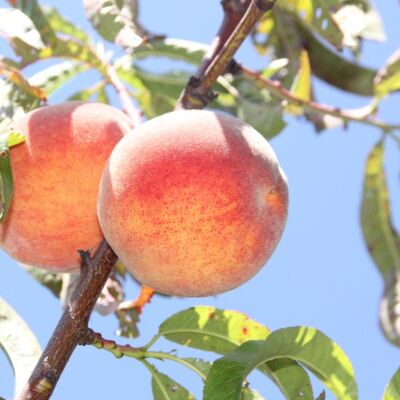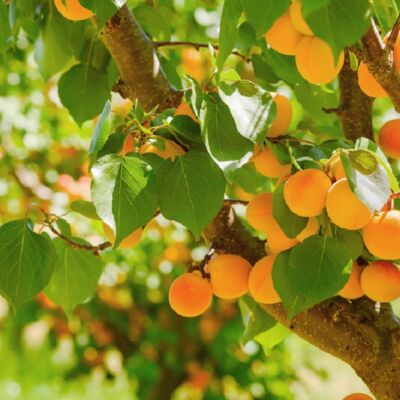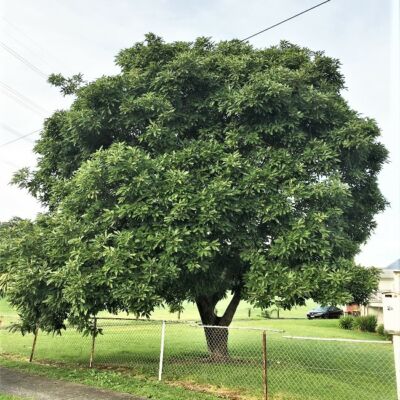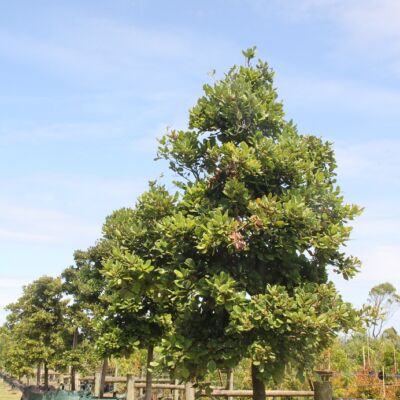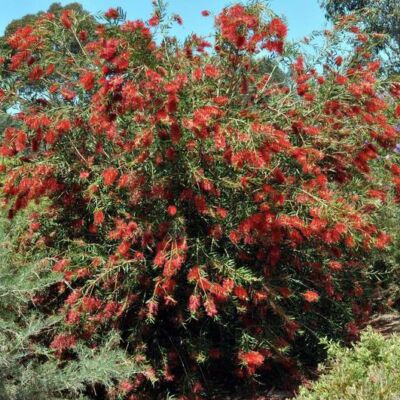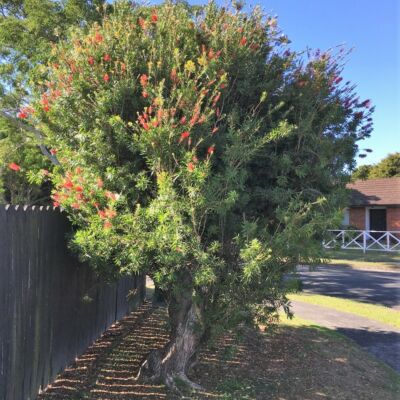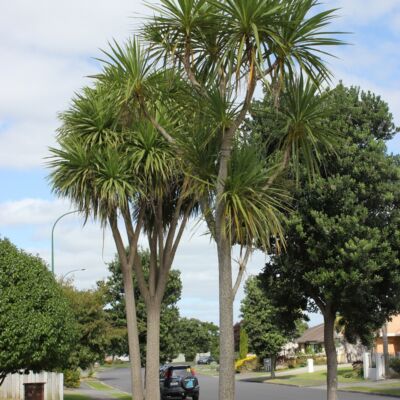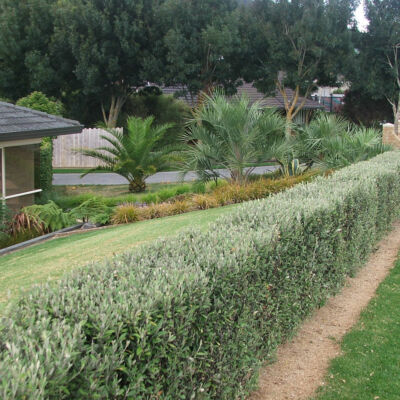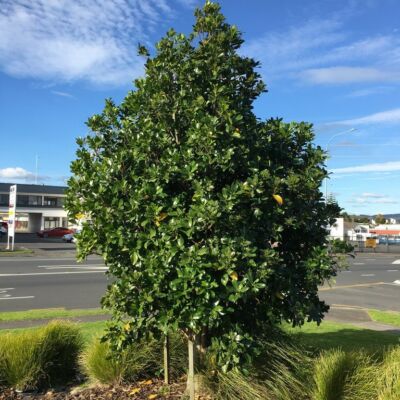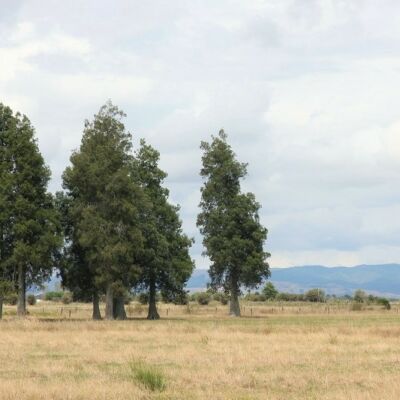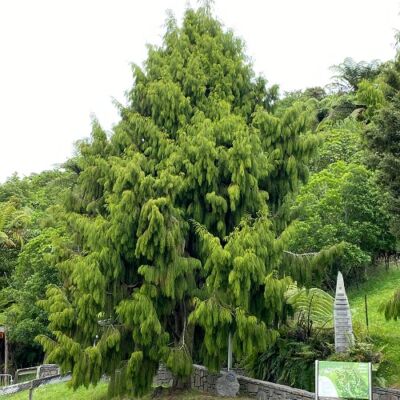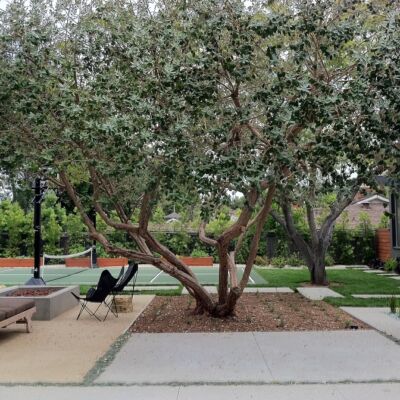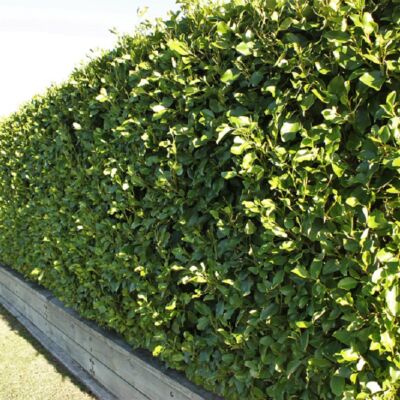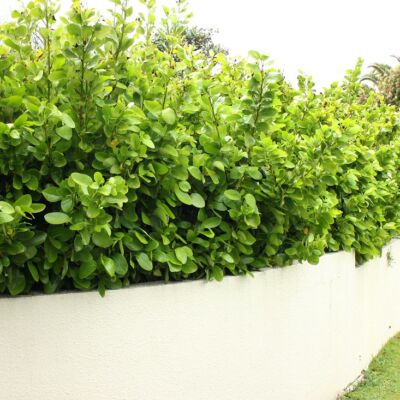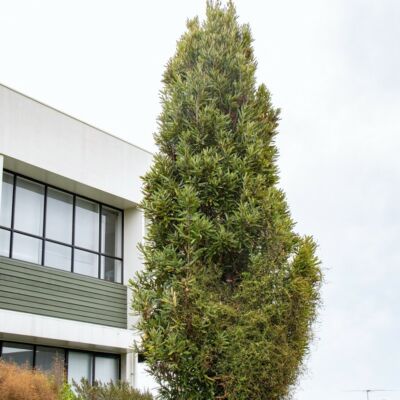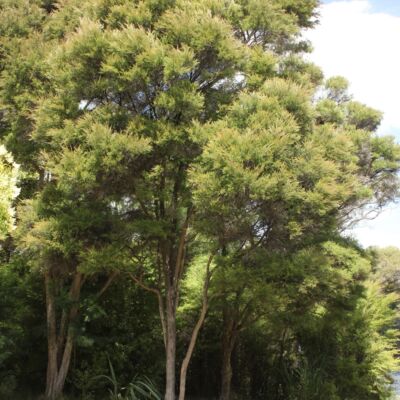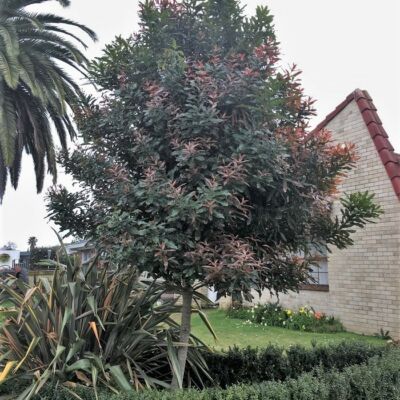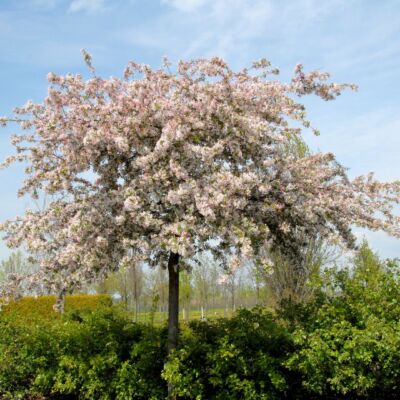Want to bring the birds back into your garden? Weather its for nectar, seeds or fruit, these trees will provide food for all manner of birdlife.
-
Apple TREES are cultivated worldwide and are the most widely grown species in the genus Malus. The apple is a deciduous tree, generally standing 2 to 4.5m tall having its origins in Central Asia. When cultivated, the size, shape and branch density are determined by rootstock selection and trimming method. LEAVES are dark green simple ovals with serrated margins. Blossoms are produced in spring at the same time as leaves. FLOWERS are generally white with a pink tinge. The FRUIT matures in late summer or autumn. Different CULTIVARS are bred for various tastes and use, including cooking, eating raw and cider production. Sometimes hand thinning is necessary to avoid overstressing the tree, which may result in a poor crop the following year. However this should not be done until mid-December when the natural fall is complete. ROOTSTOCKS are used to control speed of growth and the size of the resulting tree allowing for easier harvesting. Apple Root Stock: M26: Very Dwarf tree, Under 3.0m M.9 Dwarf tree, To Apx 3.0m, Suits well drained fertile soils. Requires support system: MM106 Semi dwarf tree, To Apx 4.5m. Good on most soils except poorly drained soils MM 793 Larger tree, To Apx 6.0m. Better suited to difficult soils (heavy or clay) Northern Spy Semi dwarf tree. To Apx 3-5m. Wetter ground and Clay. Resistance to woolly aphids. Harvest Season (Apx): EARLY = Jan – Feb. MID = Feb – March. LATE = April – May Make enquiries as to which varieties we have available now or see our online catalogue.
-
Originally domesticated in China, apricots are grown successfully around the world. These small TREES are a manageable size for the home orchard growing to around 4-5m tall. FLOWERS appear in spring with FRUIT (a drupe similar to a small peach, ranging in colour from yellow to orange) ready to harvest Dec - Feb. As they are self fruiting, you typically don't need two apricot trees to produce fruit. They are relatively easy to grow and will produce loads of fruit year after year that can be enjoyed fresh from the tree, made in to jam, bottled or dried. Apricots we supply are better suited to warmer climates. HARVEST is from Dec - Feb. Make enquiries as to which varieties we have available now or see our online catalogue.
-
A handsome, fast growing, subtropical evergreen TREE with large emerald green LEAVES that forms a thick canopy. FLOWERS September to December. FRUIT range in size and shape from round cannonball to pear like. All varieties are self-fertile though the trees will produce more and better fruit if cross pollinated. To get fruiting trees it is highly recommended to get a grafted tree and then generally require a few years to mature before fruiting. Stone grown trees may not produce fruit. Requires free draining deep soil and protection from frosts and cold winds. HARVEST September to April. from Grows Apx 6 x 4m. Make enquiries as to which varieties we have available now or see our online catalogue.
-
- Description
Handsome NZ Native stately straight and erect trunk has smooth brown bark. Eventually grow to a large canopy tree. Small flowers appear in panicles in spring followed by attractive purple fruit in autumn which are the favourite of the Native Kereru pigeon. Likes rich deeply worked well drained soil. Height x Width 20 x 6 Height Range Tall 10+ Growth Rate Moderate Plant Type Tree Shape / Habit Conical Country of Origin New Zealand Similar to Consider Planchonella costata, Alectryon Excelsa - Leaf
Leaf Colour Green - Flower
Flower Colour Orange Fragrant? No - Uses
Specimen Yes Bird Feeding Yes Note: Growth, height and grade information are given in good faith but are subject to natural variables beyond our control. -
- Description
A vigorous small tree with long, narrow green leaves with slightly pendulous branches. Bright red flower spikes carried in clusters over spring and early summer provides nectar for bees and birds. Tolerates coastal, wind, clay, sandy or dry once established. Height x Width 3 x 2 Height Range Small 1-5m Growth Rate Fast Plant Type Tree Shape / Habit Round Country of Origin Australia Similar to Consider C. Red Clusters, Salignus (Yellow) Citrinus Violetii (Violet) - Leaf
Leaf Colour Green - Flower
Flower Colour Red Fragrant? No - Uses
Screening / Shelter Yes Hedging Yes Bird Feeding Yes Note: Growth, height and grade information are given in good faith but are subject to natural variables beyond our control. -
- Description
Vigorous large shrub, new leaves emerge a silvery-pink turning to mid- green. Masses of red bottlebrush flowers with gold anthers appear in spring and autumn. Tolerant of poor dry soils once established, though prefers some moisture. Provides nectar for bees and birds. Good for hedging. Height x Width 3 x 2 Height Range Small 1-5m Growth Rate Moderate Plant Type Shrub Shape / Habit Round Country of Origin Australia Similar to Consider Kings Park Special, Salignus (Yellow) Citrinus Violetii (Violet) - Leaf
Leaf Colour Green - Flower
Flower Colour Red Fragrant? No - Uses
Screening Yes Hedging Yes Bird Feeding Yes Fruit Producing Note: Growth, height and grade information are given in good faith but are subject to natural variables beyond our control. -
- Description
Cordyline australis - Cabbage Tree Cabbage tree: An iconic New Zealand palm like tree. Long drooping slender leaves up to 1m long are clustered at the tips of the branches. Large heads of scented creamy white flowers in Nov produce nectar for bees, then fruit attracts birds from January-April. Commonly found throughout farmland, open places, wetlands and scrubland of the North and South Islands in anything from wet swampy ground to dry windy hill slopes. Hardy. Height x Width 6 x 2 Height Range Small 1-5m Growth Rate Slow Plant Type Palm Shape / Habit Upright Country of Origin New Zealand Similar to Consider Nikau Palms - Leaf
Leaf Colour Green - Flower
Flower Colour White Fragrant? Yes - Uses
Accent Yes Bird Feeding Yes Note: Growth, height and grade information are given in good faith but are subject to natural variables beyond our control. -
- Description
A slender growing shrub with rich green foliage and masses of starry yellow flowers early summer followed by dark red berries. Attracts birds. Ideal as a hedge trims well. Will tolerate dry coastal exposed or windy sites once established. Height x Width 2 x 1.2 Height Range Small 1-5m Growth Rate Moderate Plant Type Shrub Shape / Habit Round Country of Origin New Zealand Similar to Consider Syzygium resilience, Michelia Figo, Camellias, Pittosporums, Griselinia, Ficus, Ilex largo, Olea El Greco, Eugenia Ventinatii - Leaf
Leaf Colour Green - Flower
Flower Colour Yellow Fragrant? No - Uses
Hedging Yes Bird Feeding Yes Note: Growth, height and grade information are given in good faith but are subject to natural variables beyond our control. -
- Description
A moderately fast-growing tree with large glossy green leaves. Small creamy-green flowers in September followed by large orange fleshy drupes in December. Very hardy withstanding strong winds coastal conditions and drought. An excellent specimen tree able to be trimmed to shape. Height x Width 15 x 8 Height Range Tall 10+ Growth Rate Moderate Plant Type Tree Shape / Habit Round Country of Origin New Zealand Similar to Consider Alectryon Excelsa, Planchonella Costata, Magnolia grandiflora types, Vitex Lucens - Leaf
Leaf Colour Green - Flower
Flower Colour Cream Fragrant? No - Uses
Specimen Yes Good Shade Tree? Yes Screening / Shelter Yes Bird Feeding Yes Note: Growth, height and grade information are given in good faith but are subject to natural variables beyond our control. -
- Description
New Zealand’s largest Native tree. Grows in swampy areas but also grows well in dry flat and hilly locations between sea level and up to 600m once established. Medium wind tolerance. Height x Width 40 x 6 Height Range Tall 10+ Growth Rate Fast Plant Type Tree Shape / Habit Pyramidical Country of Origin New Zealand Similar to Consider Liriodendron tulipifera fastigiata, Olea El Greco, Knightia Excelsa, Dacrydium Cuprissinum, Acer Bowall, Poplar crow’s nest, Quercus robur fastigiata, Carpinus Betulus fastigiata, - Leaf
Leaf Colour Green bronze - Flower
Flower Colour Insignificant - Uses
Screening Yes Bird Feeding Yes Note: Growth, height and grade information are given in good faith but are subject to natural variables beyond our control. -
- Description
One of the most widespread of New Zealand forest trees. The leaves are small and awl-shaped and form a weeping habit, bark falls away in heavy scales. In its juvenile form makes a handsome specimen with weeping branches. After many years develops into a broader tree more upright adult form. One of the most easily recognised large trees in the forest. Prefers cool moist conditions. Height x Width 30 x 5 Height Range Tall 10+ Growth Rate Moderate Plant Type Tree Shape / Habit Pyramidical Country of Origin New Zealand Similar to Consider Olea El Greco, Knightia Excelsa, Carpinus Betulus fastigiata, Dacrycarpus Dacrydoidies - Leaf
Leaf Colour Dark Green - Flower
Flower Insignificant but produces berries - Uses
Specimen Yes Accent Yes Bird Feeding Yes Note: Growth, height and grade information are given in good faith but are subject to natural variables beyond our control. -
- Description
A small tree with a symmetrical habit. Long glossy light green leaves. Unusual yellow / green papery flower clusters in summer. Purpureum has red purple leaves and light red flowers. Will tolerate dry sandy or rocky soils, salt spray, windy areas and drought conditions. Ideal used as a wind or privacy screen and is useful in harsh conditions. Keep trimmed to maintain shape. Height x Width 3.5 x 2.0 Range Small 1-5m Growth Rate Fast Plant Type Tree Shape / Habit Spreading Country of Origin New Zealand Similar to Consider D. Purpurea. Myrsine salicina, Planchonella costata, - Leaf
Leaf Colour Green - Flower
Flower Colour Yellow green Fragrant? No - Uses
Screening / Shelter Yes Hedging Yes Note: Growth, height and grade information are given in good faith but are subject to natural variables beyond our control. -
A smaller growing bushy TREE it is one of the hardiest of the subtropical fruits, growing in most soils and tolerating several degrees of frost. Feijoas are commonly available as seedlings, but plants grown from cuttings or grafted specimens are more reliable. Attractive red and white FLOWERS also attract birds and are edible as well. FRUIT ripens between April and May and when mature will fall off the tree at a touch. The skin is green and ranges from smooth to rough and dimpled. The pulp is sweet and juicy with a good flavour. Generally require another to cross pollinate although "Unique" is unique in that it doesn't! They respond well to trimming if they become a little tall or woody and can also be used as a hardy hedge. APX: 4.0m - HARVEST: March-May Make enquiries as to which varieties we have available now or see our online catalogue.
-
- Description
Lime-green leaves are glossy with a slightly wavy edge. Can be clipped to form a hedge. Withstands coastal conditions strong winds and frosts. Height x Width 3 x 3 Range Small 1-5m Growth Rate Moderate Plant Type Shrub Shape / Habit Round Country of Origin New Zealand Similar to Consider Griselinia Lucida, Ficus Tuffi, Ilex Largo, P. Cyril Watson, P. Laetus, Planchonella costata - Leaf
Leaf Colour Green - Flower
Flower Insignificant - Uses
Screening Yes Hedging Yes Bird Feeding Yes Note: Growth, height and grade information are given in good faith but are subject to natural variables beyond our control. -
- Description
A most impressive plant with large rounded, very thick, glossy, lime green leaves. Excellent tropical hedge. Wind and salt resistant. Grows in sun or shade. Good drainage. NZ native. Height x Width 3 x 2 Height Range Small 1-5m Growth Rate Moderate Plant Type Shrub Shape / Habit Round Country of Origin New Zealand Similar to Consider Syzygium resilience, Michelia Figo, Camellias, Pittosporums, Corokia, Ficus, Ilex largo, Olea El Greco, Eugenia Ventinatii - Leaf
Leaf Colour Green - Flower
Flower Very small - Uses
Hedging Yes Note: Growth, height and grade information are given in good faith but are subject to natural variables beyond our control. -
- Description
Slender, erect, tapering tree with long green serrated leaves. Tubular reddish brown flowers in spring attractive to native birds. Ideal tree for smaller gardens and narrow spaces. Ok in coastal gardens. Avoid phosphate fertilizers. Height x Width 7 x 3 Height Range Medium 5-10m Growth Rate Moderate Plant Type Tree Shape / Habit Pyramidical Country of Origin New Zealand Similar to Consider Liriodendron tulipifera fastigiata, Olea El Greco, Dacrydium Cuprissinum, Acer Bowall, Poplar crow’s nest, Quercus robur fastigiata, Carpinus Betulus fastigiata, Dacrycarpus Dacrydoidies - Leaf
Leaf Colour Green - Flower
Flower Colour Red Fragrant? No - Uses
Specimen Yes Accent Yes Bird Feeding Yes Note: Growth, height and grade information are given in good faith but are subject to natural variables beyond our control. -
- Description
A Fast growing spreading tree of varying form. Tiny needle like leaves are softer to touch than Manuka. In During summer small white flowers smother the tree giving an almost snow covering effect. Very attractive to bees. Larger growing tree than Manuka. Seeds smaller than Manuka. Will withstand windy coastal conditions, or dry soils once established. Height x Width 6 x 4 Height Range Medium 5-10m Growth Rate Fast Plant Type Tree Shape / Habit Round Country of Origin New Zealand Similar to Consider Leptospermum scoparium - Leaf
Leaf Colour Green - Flower
Flower Colour White Fragrant? No - Uses
Hedging Yes Bird Feeding Yes Note: Growth, height and grade information are given in good faith but are subject to natural variables beyond our control. -
- Description
Narrow lanceolate sharply pointed leaves 20mm x 6mm. Single or double flowers cover the bush late autumn to early spring providing a colourful display and nectar for bees. Berries resemble small hot cross buns. Hardy and adaptable. Will withstand windy coastal conditions, or dry soil once established. Ok in clay soils. Height x Width 5 x 3 Range Medium 5-10m Growth Rate Fast Plant Type Tree Shape / Habit Round Country of Origin New Zealand Similar to Consider Kunzea Ericioides, Lepto Coppersheen - Leaf
Leaf Colour Green - Flower
Flower Colour White Fragrant? No - Uses
Screening / Shelter Yes Hedging Yes Bird Feeding Yes Note: Growth, height and grade information are given in good faith but are subject to natural variables beyond our control. -
- Description
An evergreen tree with crisp serrated leaves are a red colour when young but mature to dark green. Pink or white (depending on variety) fragrant flowers are produced from spring to summer followed by a round hard shelled in summer to autumn. These edible nuts that are a rich source of thiamine, vitamin B6, manganese, iron, magnesium and phosphorus. Harvest period, lasting from around March until June. Generally requires another type for cross-pollination. Make enquiries as to which varieties we have available now or see our online catalogue. Height x Width 8 x 4 Height Range Medium 5-10m Growth Rate Moderate Plant Type Tree Shape / Habit Round Country of Origin Australia Similar to Consider - Leaf
Leaf Colour Dark Green - Flower
Flower Colour Pink racemes Fragrant? Yes - Uses
Specimen Yes Good Shade Tree? Yes Accent Yes Bird Feeding Yes Fruit Producing Yes Note: Growth, height and grade information are given in good faith but are subject to natural variables beyond our control. -
- Description
A smaller growing, ornamental tree with long gracefully arching branches. In spring the whole tree becomes covered with bright pink buds opening to white to pale pink flowers. Yellow fruits flushed red soon follow which can be eaten but birds also enjoy. Height x Width 3 x 2.5m Height Range Small 1-5m Growth Rate Moderate Plant Type Tree Shape / Habit Conical Country of Origin Japan Similar to Consider Other Crab apples, Cercis Forest Pansy, Prunus Flowering Cherries - Leaf
Leaf Colour Green Deciduous Leaf Colour Yellow - Flower
Flower Colour Pinks and Reds Fragrant? No - Uses
Accent Yes Bird Feeding Yes Fruit Producing Yes Note: Growth, height and grade information are given in good faith but are subject to natural variables beyond our control.

